How the locomotives were arranged
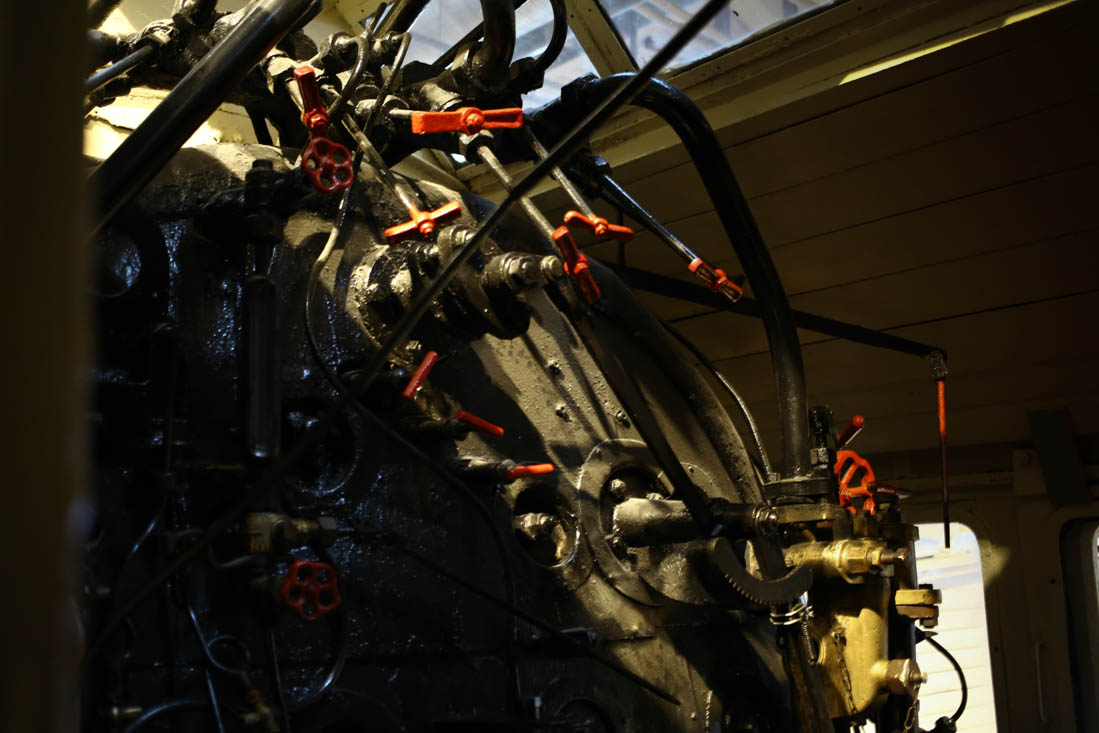
This is how the cabin of the Sergo Ordzhonikidze locomotive looks like (this is CO17-1137). The set of tubes on the top is a steam dispenser, each consumer has its own pipe. And there are a lot of consumers in a technologically mature enough steam locomotive: two steam engines on the left and right for wheel movement, a whistle, a mechanical carbon sub-sensor, injectors for water injection, an electric generator for lighting, a pump for an air line, and so on.
Before electric lamps, kerosene lamps were used right in front of the engine and acetylene chemical searchlights. Then, around the beginning of the twentieth century, "luxury" cars got electric light, and then the engine began to be illuminated with bright lamps, in particular, to see what was happening with the wheels and axles. Because the assistant driver sometimes needed to get out on the move and knock with a sledgehammer on the wings, as the snow huddled and froze in the ice.
')
Domestic passenger locomotive is different from the cargo visually very easily. He looks elegant, colored (most often green or blue), he has big coupling wheels. For the passenger, speed was important, for cargo - traction, so the truck has less coupling wheels. And freight locomotives are usually black.
In front of the locomotive there is a small runner cart, which has the ability to rotate relative to the main frame. Here it is right in front of the green steam engine:

It is necessary in order to fit the engine in the curves (could turn easier).
Here is a steam engine, it converts the energy of steam into mechanical energy driving the wheels:
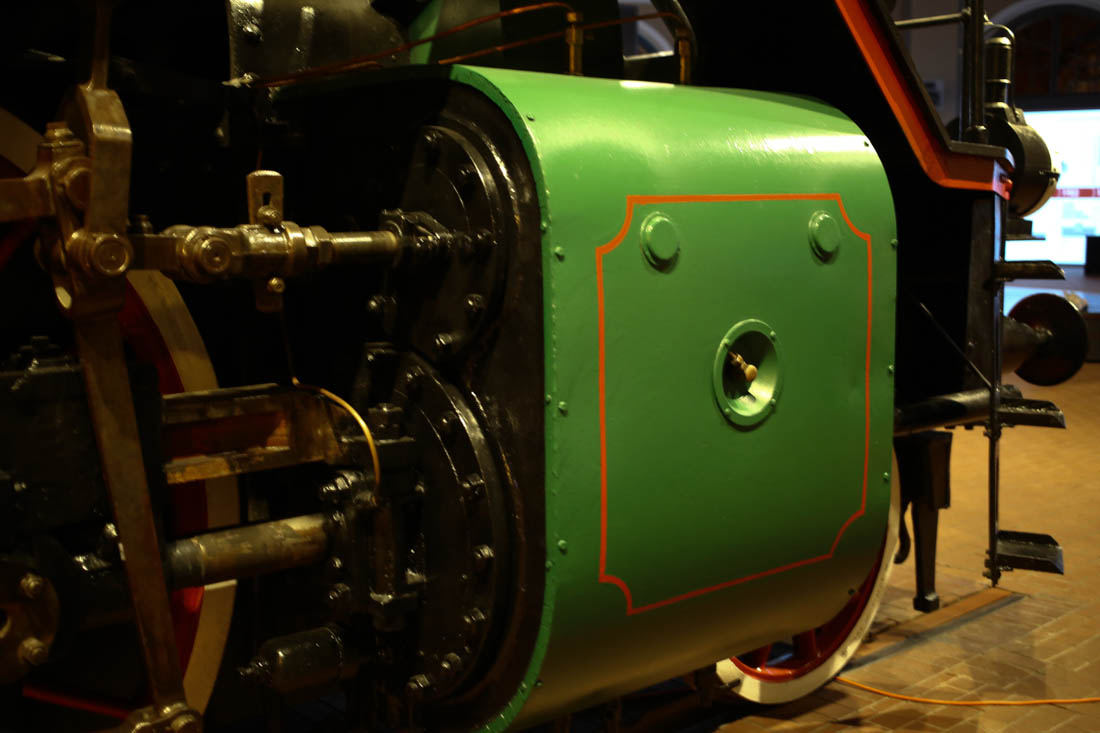
For the train goes the tender car, there are loaded stocks of coal and water. Pay attention to the characteristic Russian counterbag: it connects with a booth on a steam train specifically to provide a more comfortable working environment for the locomotive brigade in winter.

This is the principle arrangement of a steam locomotive (here and further we walk through the Museum of Russian Railways in St. Petersburg). They made a wonderful stand with the anatomy of a steam locomotive:

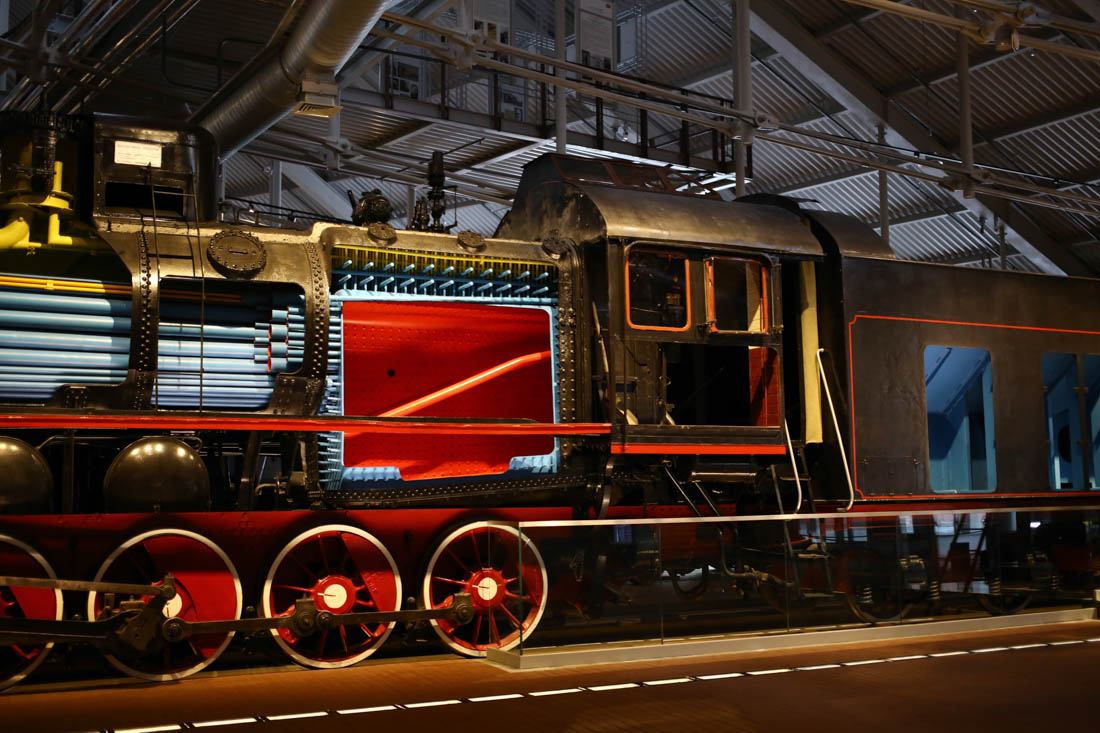
In order for the engine to go, it must be loaded with coal (fuel), water (working fluid) and a brigade from the driver, assistant driver and fireman. This is how water was loaded through a special hatch in the tender using a hydrocolumn:

Further the crew heats the boiler and drives the train. Respectively stand out the firebox, boiler, sukhoparnika cap and pipe. Around the wheels are steam engines that make movement from steam energy. Steam formation occurs inside the locomotive, then a couple of times the steam is driven along the contour of the tubes inside the device.
It was necessary to manage the steam train almost up to the modernity very gently and carefully, and for this you needed high professionalism. The fact is that any part of the road has slopes: descents and ascents. The cars interact unevenly, and the hitch between them is torn. The train can crumble, and it will end badly. Plus, you just need to take into account the huge inertia and be able to manage this whole colossus. Therefore, there were two qualified people in the booth: an assistant who knows how to sink a boiler, and a driver who knows how to manage a train and everything else.
Here is the driver's workplace and its review:


But the assistant with the door out:

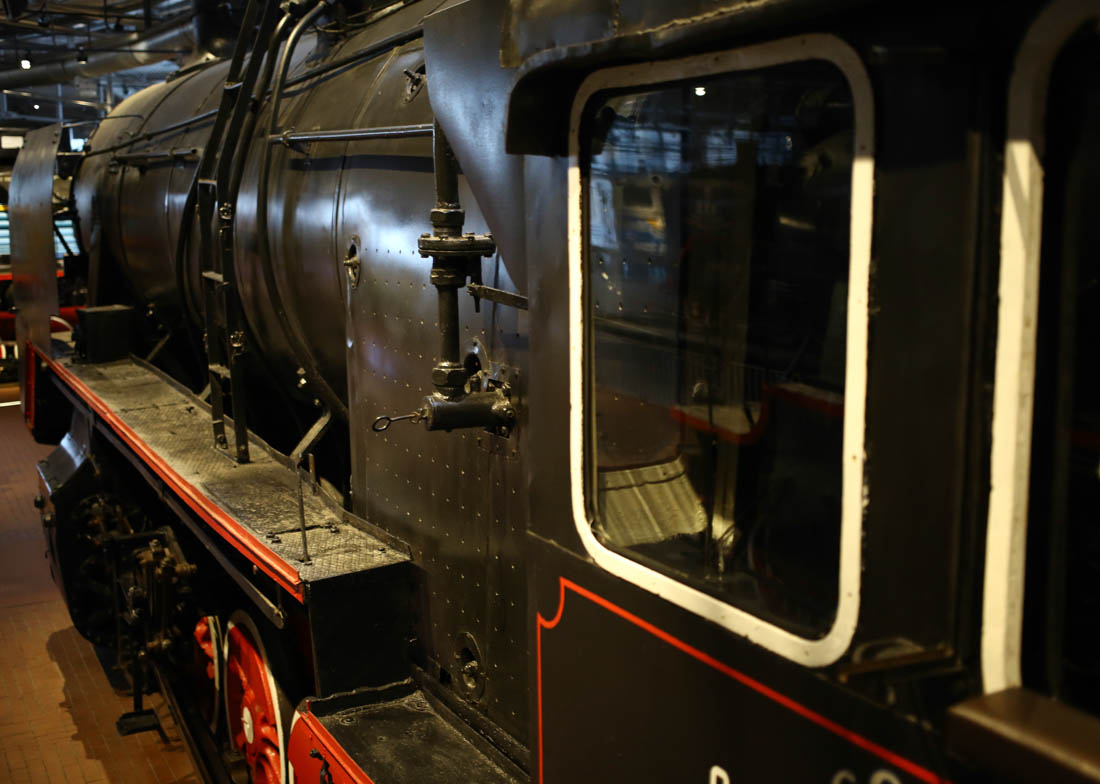
The stoker, contrary to popular belief, did not drown, but simply fed coal into the bunker in the locomotive from the tender. It was usually a healthy man who knew how to work a lot with a shovel.
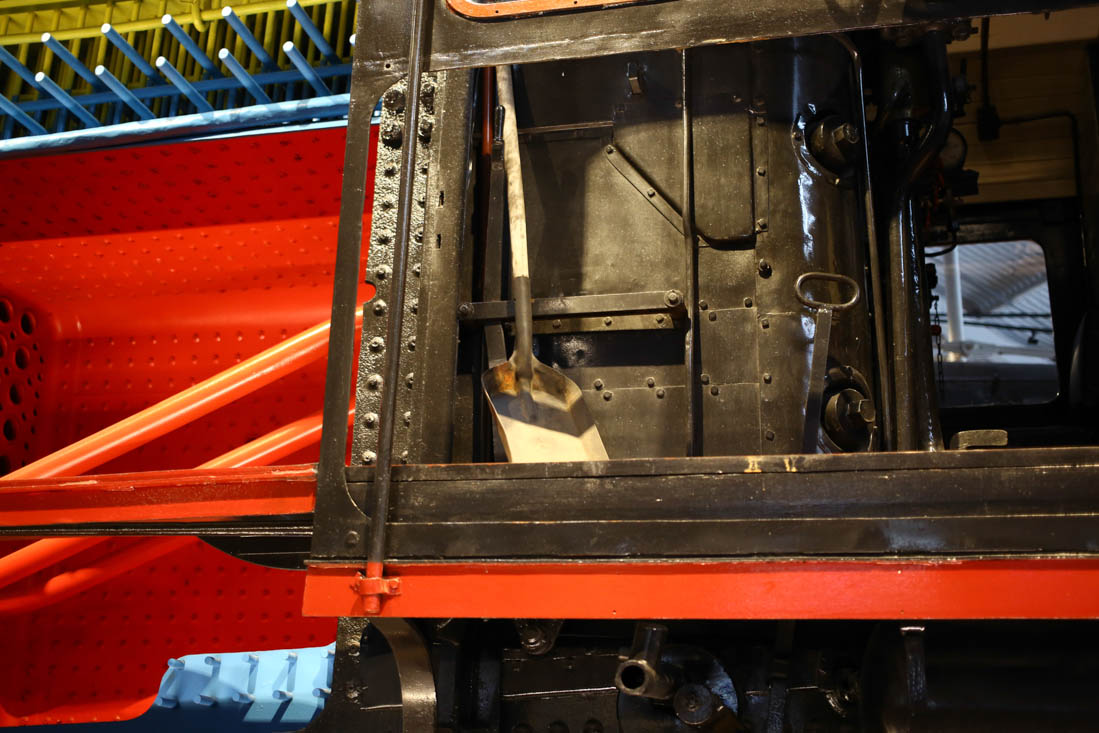
On this shovel, by the way, the assistants passed an unofficial exam for the machinists when they were admitted to the brigade. We had to fry eggs. To do this, it was necessary to melt the furnace evenly, throwing coal at the corners of the compartment, correctly hold the shovel, estimate the temperature in the compartment by the color of the parts and coal, and control the temperature of the shovel. If the scrambled eggs turned out to be burnt or “with snot,” it was a worthless assistant. If excellent - it was possible to eat, drinking water from the tanks. Here from this, where it is written "The water is poisoned, you can not drink":

Water from the tanks, despite the inscription, boiled and drank almost every driver. But it was forbidden, because after loading water into it, it was necessary to throw a few pills of a descaling agent, which is not very good for health. This is so that the tubes inside the steam and water systems do not clog too quickly. Soft water was so valued that if there was a source near the railway, a station was immediately put there, even if there was no settlement along the road. The average distance between English stations is 20 kilometers, and between ours is 80. And this is because it is almost the limit of a locomotive course without refueling with water.
This is a problem, and at least some solution was needed. The first diesel locomotive was invented and assembled with us to solve some of the deficiencies in the locomotive system. Specifically, I really wanted to get away from water addiction and simplify maneuvers at the stations. Shunting diesel locomotive is good because it does not need to constantly drown: there is work - turned on the engine, no work - turned off. In the end, they tried to assemble a prototype and made this creation of the gloomy Russian genius - Shch-EL-1 of 1924:


He, alas, did not last long and did not spread widely. The prototype had too many problems associated with the fact that steam gave instant feedback, and the engine required a gearbox between the engine and the wheels. Gear shifting created hard shocks, and they could cause the coupling to break. It took an electric gear system, which resulted in just such a design:

As a result, for some time the locomotives refused and began to conduct experiments immediately with electric motors. As you can guess, the batteries were not very good at that time, and therefore they were distributed only where the trams could go. That is, on the tram tracks at night, freight trains for Moscow enterprises were crawling.
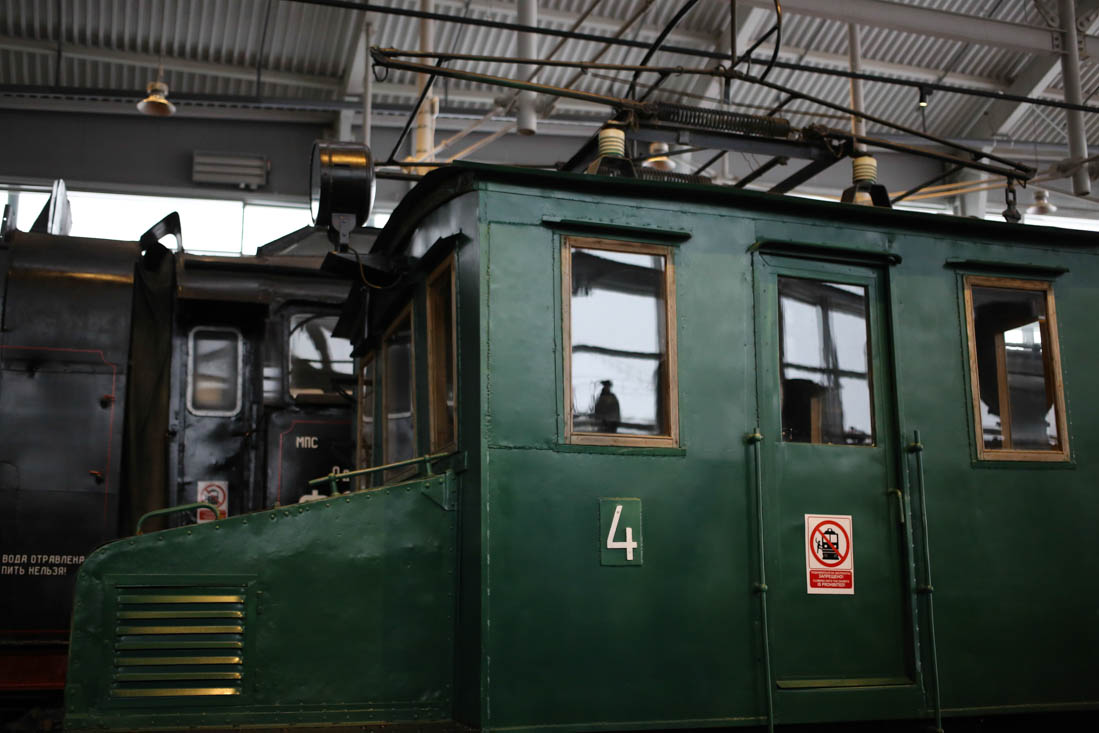
But, of course, steam locomotives became more and more obsolete. At some point, the USSR made an incredibly beautiful and efficient locomotive. Here it is, in the museum is the last locomotive of the P36 series. He has a four-digit number 0251, but it produced just that much:

Because of this lampas he was called “The General”.



And at about the same time, America withdrew steam locomotives from production, and at the XX Party Congress Khrushchev also decided to put on diesel locomotives. Thus appeared the TEC: the killer of steam locomotives:

And this deck fasteners in order to put the diesel locomotive in the USSR by sea. They carried through Vladivostok both wagons (disassembled) and diesel locomotives.
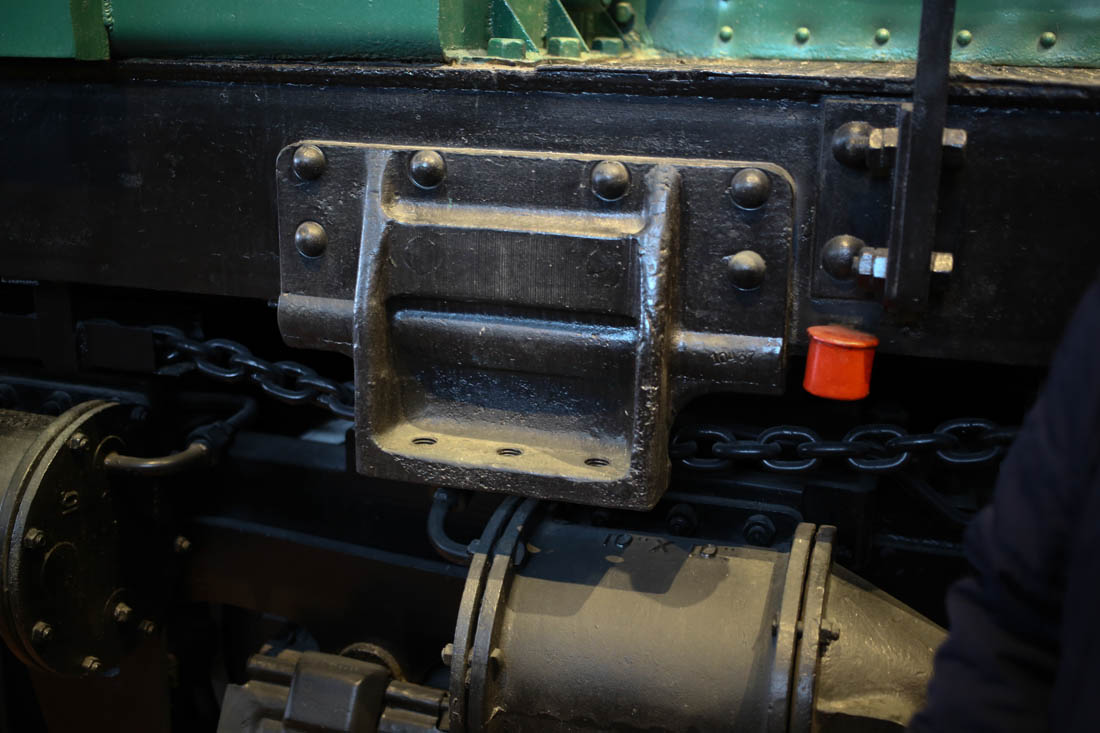

Then there was the rich history of Soviet diesel locomotives. Of the interesting things worth mentioning are these exhibits:

AB 758 regular diesel bus - Romanian. He walked 110 kilometers per hour, that is, not much faster than locomotives (locomotives could have developed up to 120 km / h), but he did not stop to refuel with water.
Here on TE-6769 (T means the trophy equivalent of the fact that after T, that is, as close as possible to the E-series), the sandbox is very clearly visible:

Taps from it lead to each wheel and end like this:
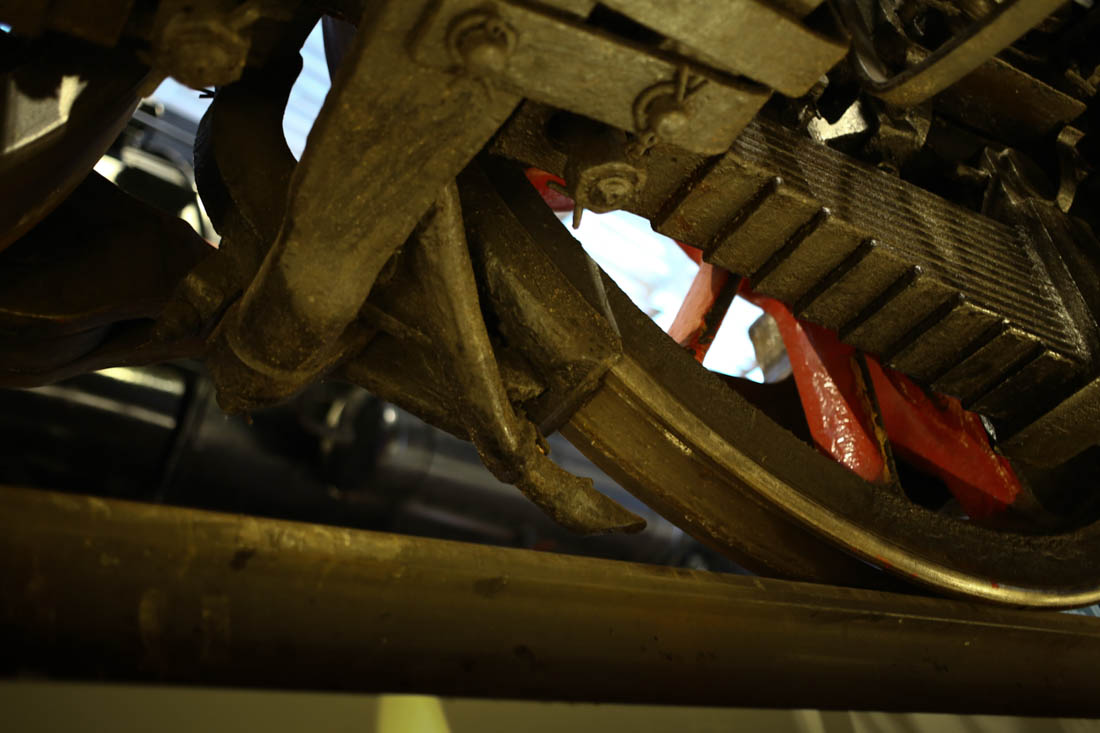
So sand is fed under the wheels to increase friction. This is necessary when emergency braking or when icing paths.
Under the wheels are still clearly visible springs, highways and brakes:
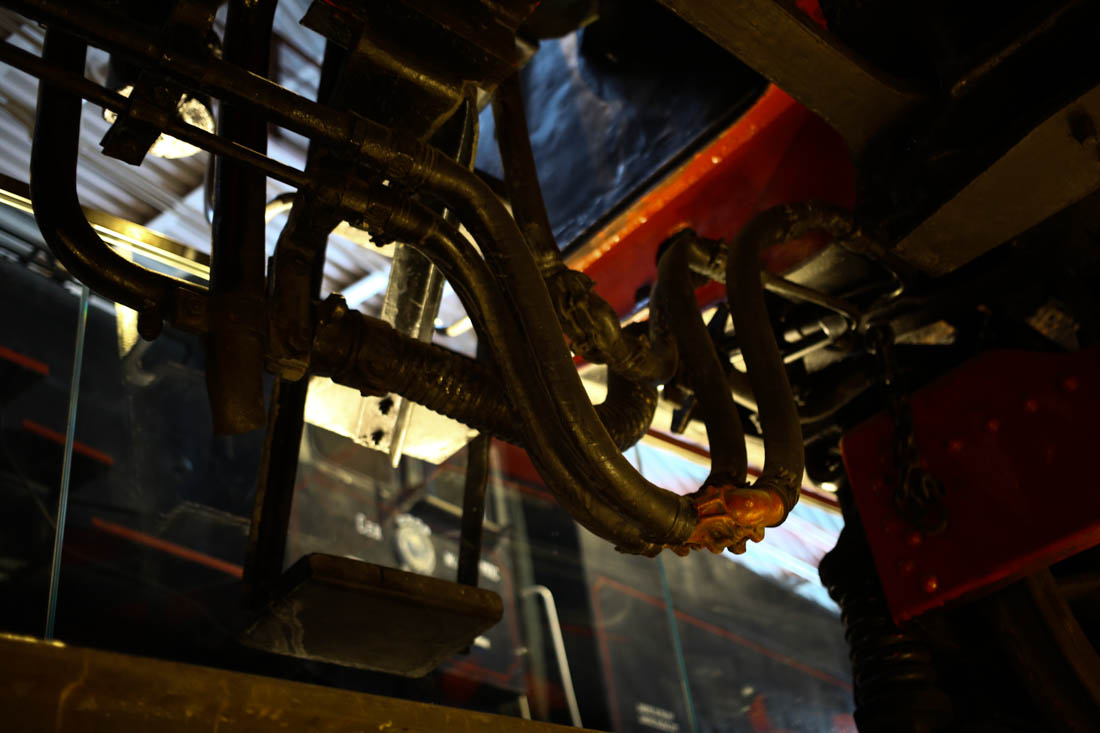
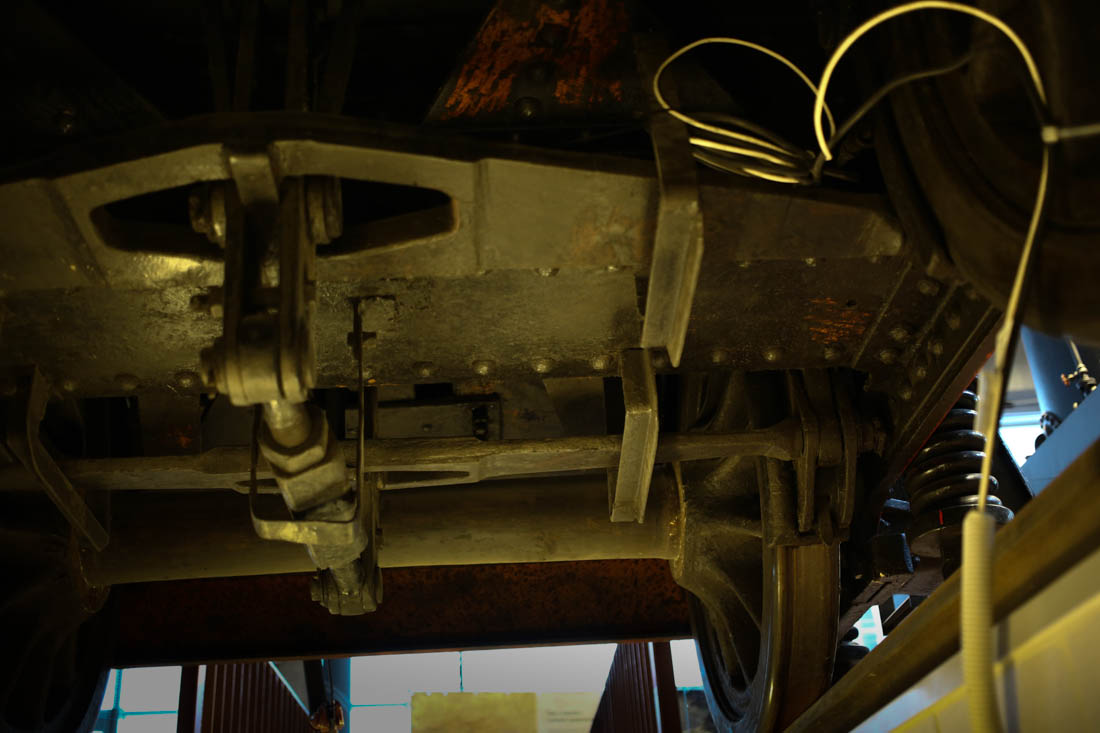
But with the help of this device one could find out the speed of a locomotive:

The rotational speed was taken from the front axle and then converted to linear velocity on the instrument.
There is also an interesting class of steam locomotives, these are the so-called tank locomotives. They differ from ordinary ones only in that coal and water are on the locomotive itself, and not in the tender:

It is clear that the reserves there are not very large, but sometimes it is really easier.

This tank has a great carbide flashlight. The top with a yellow-orange edge is the “American lantern”, it is also an acetylene chemical searchlight. The carbide tank was dripping water (the water pressure was regulated manually), it reacted, a combustible gas was released, which then burned in the burner. It turned out a bright flame, which gave the light much more than the “lights on the candles” below. By the way, the candle lights are removable so that you can see the locomotive. Later began to make lighting. Here is a CO series lamp that illuminates the wheels:

And, returning to the workplace of an assistant engineer driver, there, next there, the switchboard, while small, is just for such lamps:
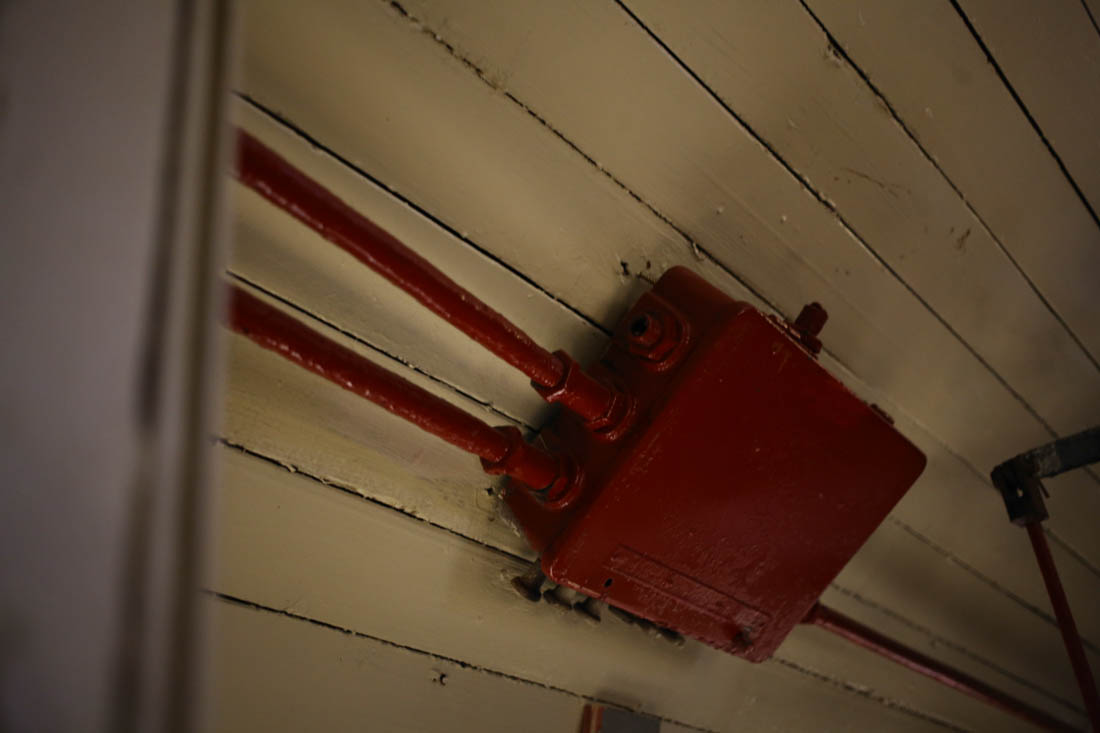
A very interesting device is the turntable. The depot was then based on a turntable architecture:
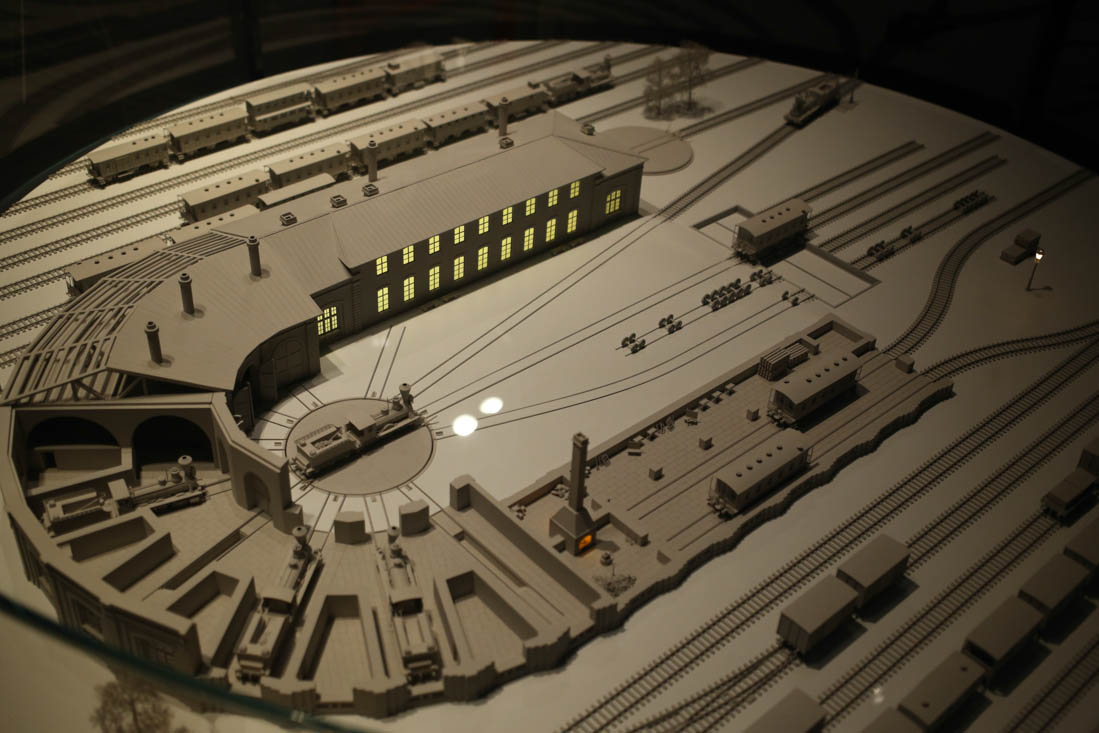
These locomotives in the museum were placed in such a circle, which is located in the center of the exposition (this was once the operating depot):
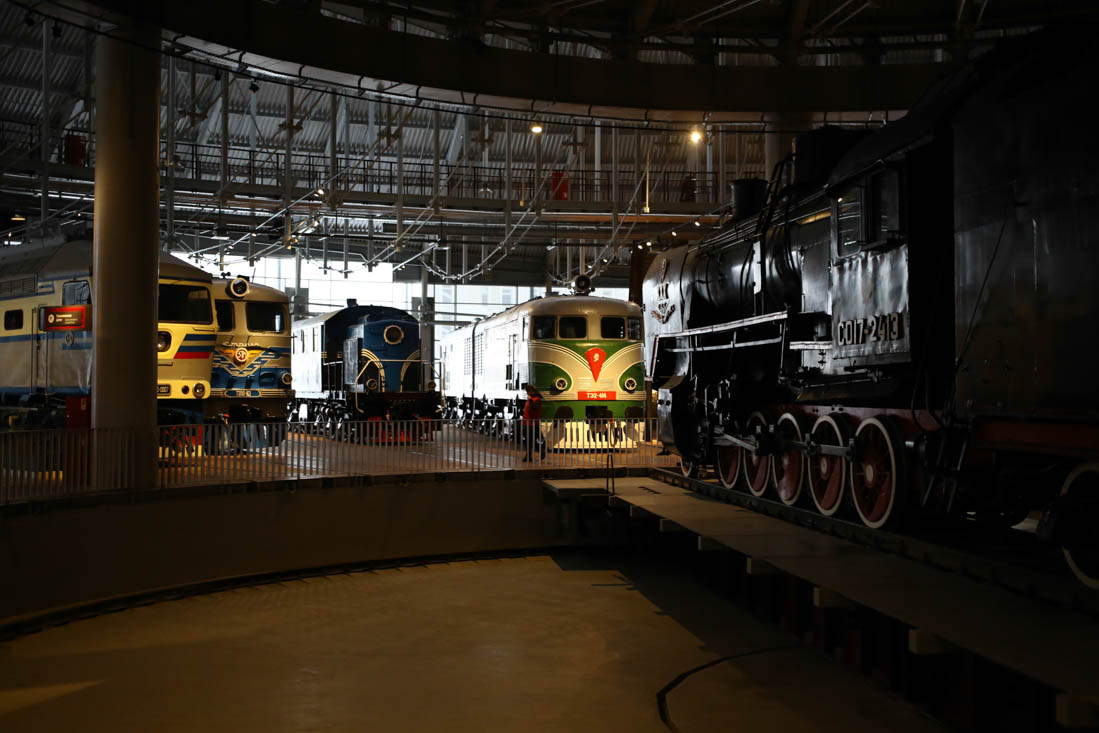
An alternative to such a circle is arrow triangles. But the circles, as you can see, were much more convenient, especially when they switched from a manual turn to engines.
Now let's look at the locomotives from above. Here you can clearly see the auger for feeding coal from the tender:
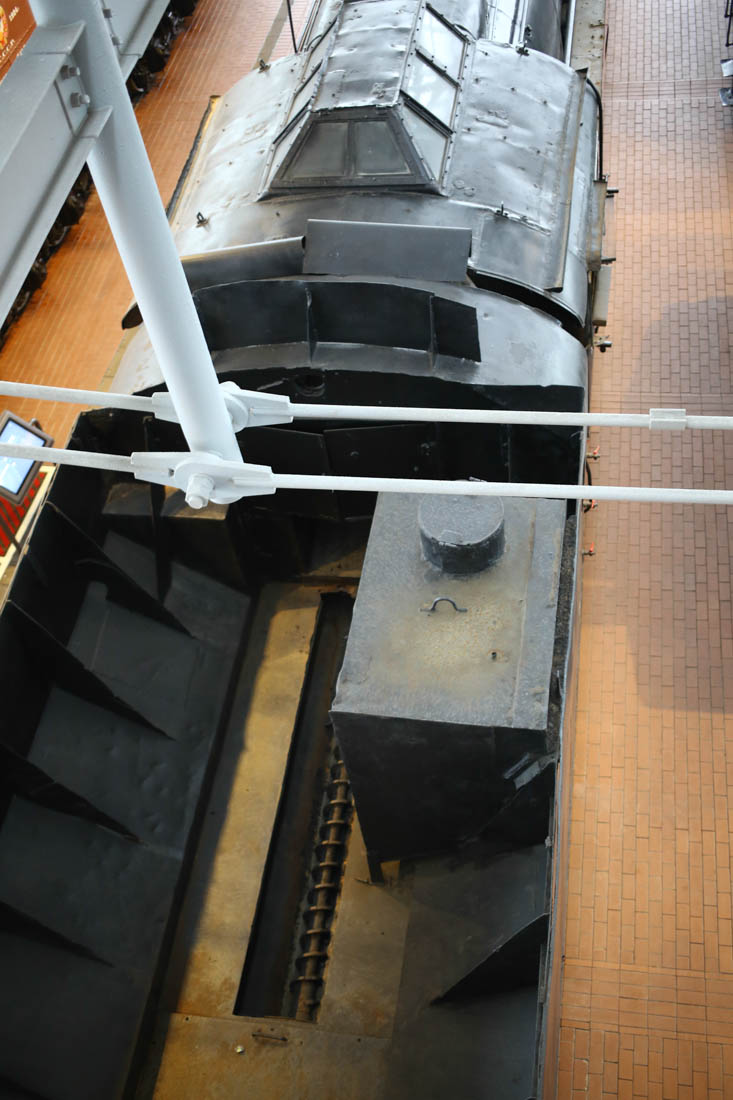
Turbogenerator:
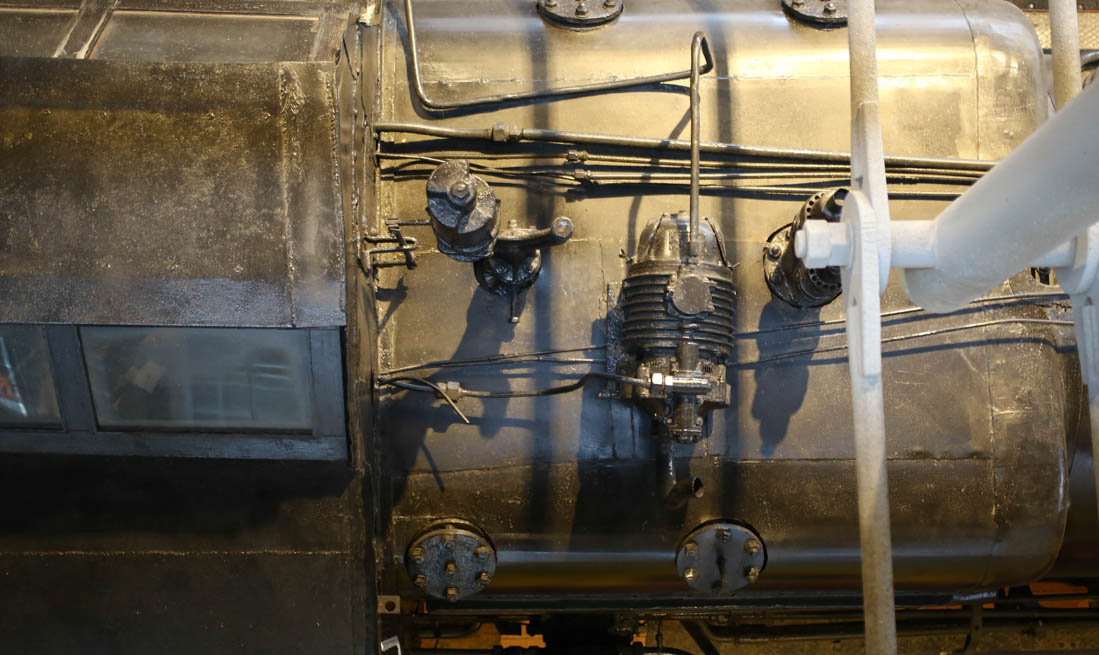
Safety valves (later on more powerful steam locomotives, they began to make three, here two in case of a single failure):
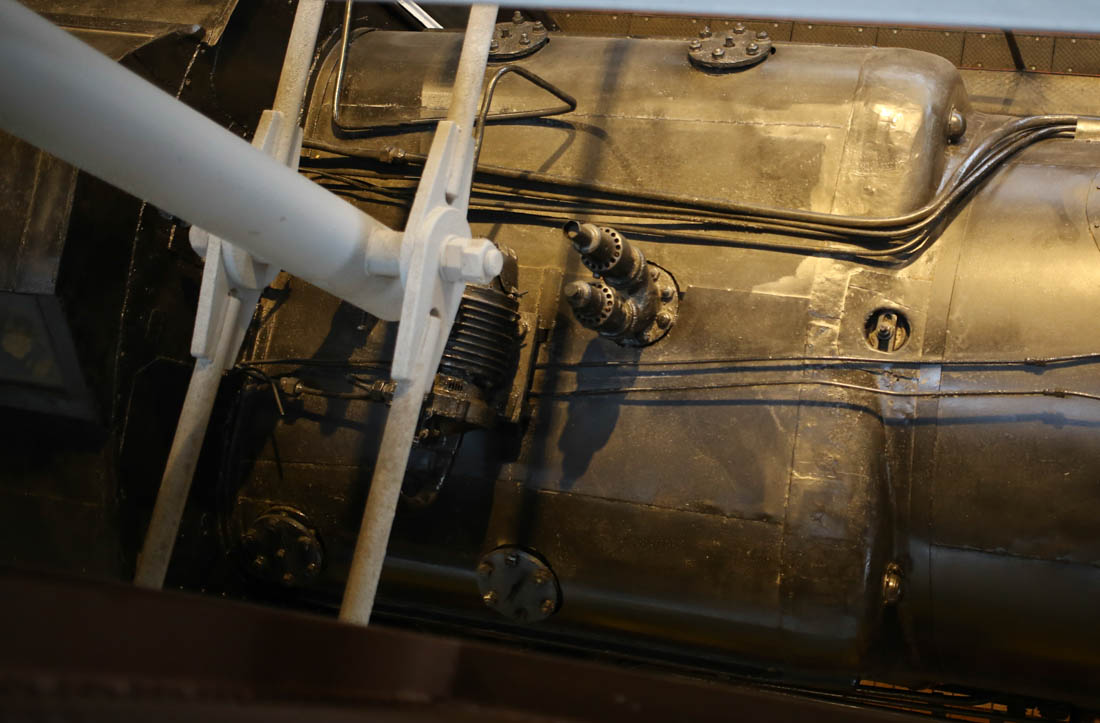
On diesel locomotives from above and from the sides, there are still characteristic grids for the refrigerator: since the engines were installed on ships, it was necessary to cool them somehow so that they would not boil. In the water it is just (water), and on the railroad up to a quarter of the locomotive is occupied by a refrigeration unit.
This is the reconstruction of the middle of the day at the station:

The table with the locomotives and the brigade commanders is visible from behind. Brigades could be assigned to the locomotive (three brigades, one senior driver) or change. The first method provided the best service for the “native” locomotive, and the second - less mileage, since the teams rested in the working depot and sometimes could not immediately go back.
And the last. The engine with a large battery for steam, bestopochny. It was used in chemical plants where fire was banned:
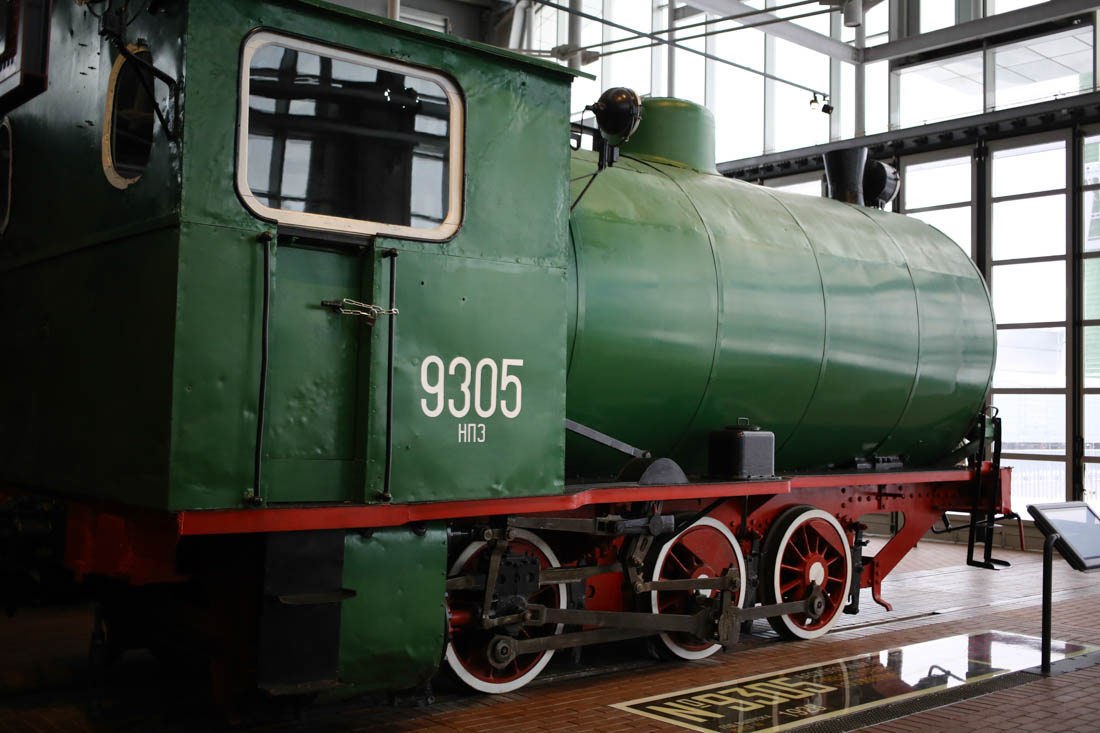
The front is a large steam tank, in essence. The locomotive came to the boiler, refueled like this:

And he went into the danger zone to work. The pair lasted about two hours.
We have already talked a lot about the railway, here are some more posts on this topic:
• Large FAQ about long-distance trains and non-obvious rules
• Why in the presence of power you need a good old coal boiler in the car
• How the long-distance passenger car is arranged
• How cars are assembled for passenger trains
• Evolution of a railroad car
• How the station works
• Trains are different. Highly
Source: https://habr.com/ru/post/441714/
All Articles